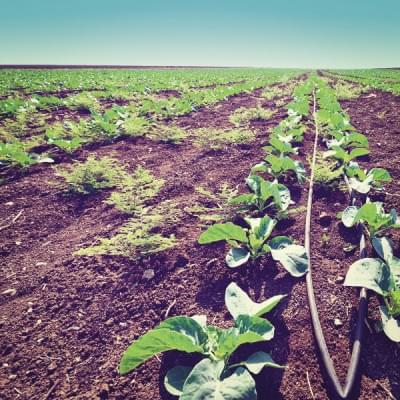Magazine: New irrigation programme is already in the pipeline
In Hungary most plant varieties can be grown without irrigation, but with a well-planned irrigation strategy yield can be made more stable even in these crops, what is more, in addition to higher yield quality would also improve.
At the moment 100,000 hectares of land is irrigated in Hungary, while in the past an irrigation system was established for 300,000 hectares. The main reason behind the reduction in the size of irrigated land is that irrigation costs are difficult to be included in produce prices when selling them. It may be shocking news that only 5 percent of agricultural land is irrigated in Hungary – this is half of the European Union average. Both the government and land owners wish to increase the size of irrigated land. Presently farmers have irrigation licence for 200,000 hectares but only 60,000-120,000 hectares were irrigated in the last few years. According to the Hungarian Chamber of Agriculture (NAK), there is farmer demand for irrigating 300,000 hectares and 2,430 farmers have irrigation licence, with another 4,400 having applied for licence already. Estimation is that HUF 200 billion would be needed for irrigation system development. The government intends to transform the current system in three stages: in the first (2014) the new policy will be developed and the basic implementation conditions will be created; in the second stage (2021), in line with the EU’s budgetary planning period until 2020, the necessary steps will be taken to realise the new strategy; in the third stage (2027) the long-term objectives will be realised by the water management organisation. Hungary’s surface water flow represents a volume of 118 billion m³ per year and 95 percent of this comes from outside of the country’s borders. The per capita 12,000m³ yearly water quantity is one of the biggest in Europe but the majority is related to the river Danube. In average weather conditions 58 billion m³ of rain falls in a year, from which 52 billion m³ evaporates and leaks into the ground. Three quarters of water is in the rivers, Danube, Tisza and Dráva. These data make it clear that Hungary and Hungarian agriculture have reserves for irrigation with sound water retaining and management. Drought and the lack of water represent a growing challenge for water management experts in Hungary. An ever-bigger proportion of our water stock is being used and our reserves are shrinking. In certain areas and periods water shortages occur from time to time. The change in the pricing of agricultural water services cannot be delayed any more. What is more, the list of service providers also needs to be reviewed, together with the conditions of service providing and the accreditation process. Hungary’s new water strategy specifies the basic principles of irrigation, stating that it has to be developed in areas where the natural and economic conditions are best suited for it. Irrigation has to be started only when the level of production without irrigation has reached its limits. Environmental considerations must be observed when creating water reserves: all new water reserves must be ‘green reserves’ and development work must be harmonised with soil protection regulations.
Related news
Related news
Recognition of Consumer Protection Excellence: Honoring the Best of 2024
This year’s outstanding consumer protection officers and special award recipients…
Read more >KSH: industrial production decreased by 0.2 percent in October
In October, the volume of industrial production fell by 0.2…
Read more >Technological advancements and business travel
The latest research from International Workplace Group (IWG), the leading…
Read more >






